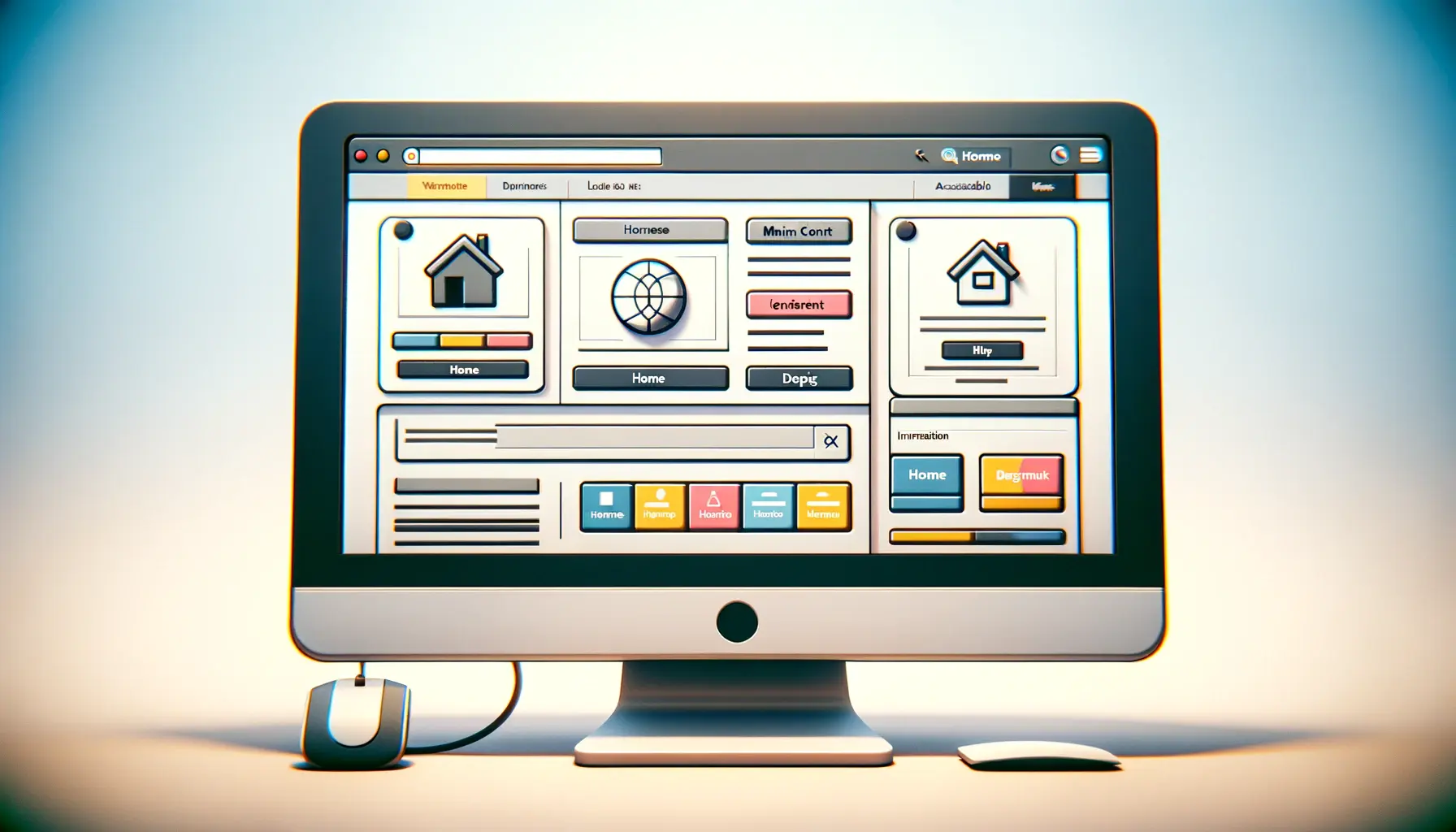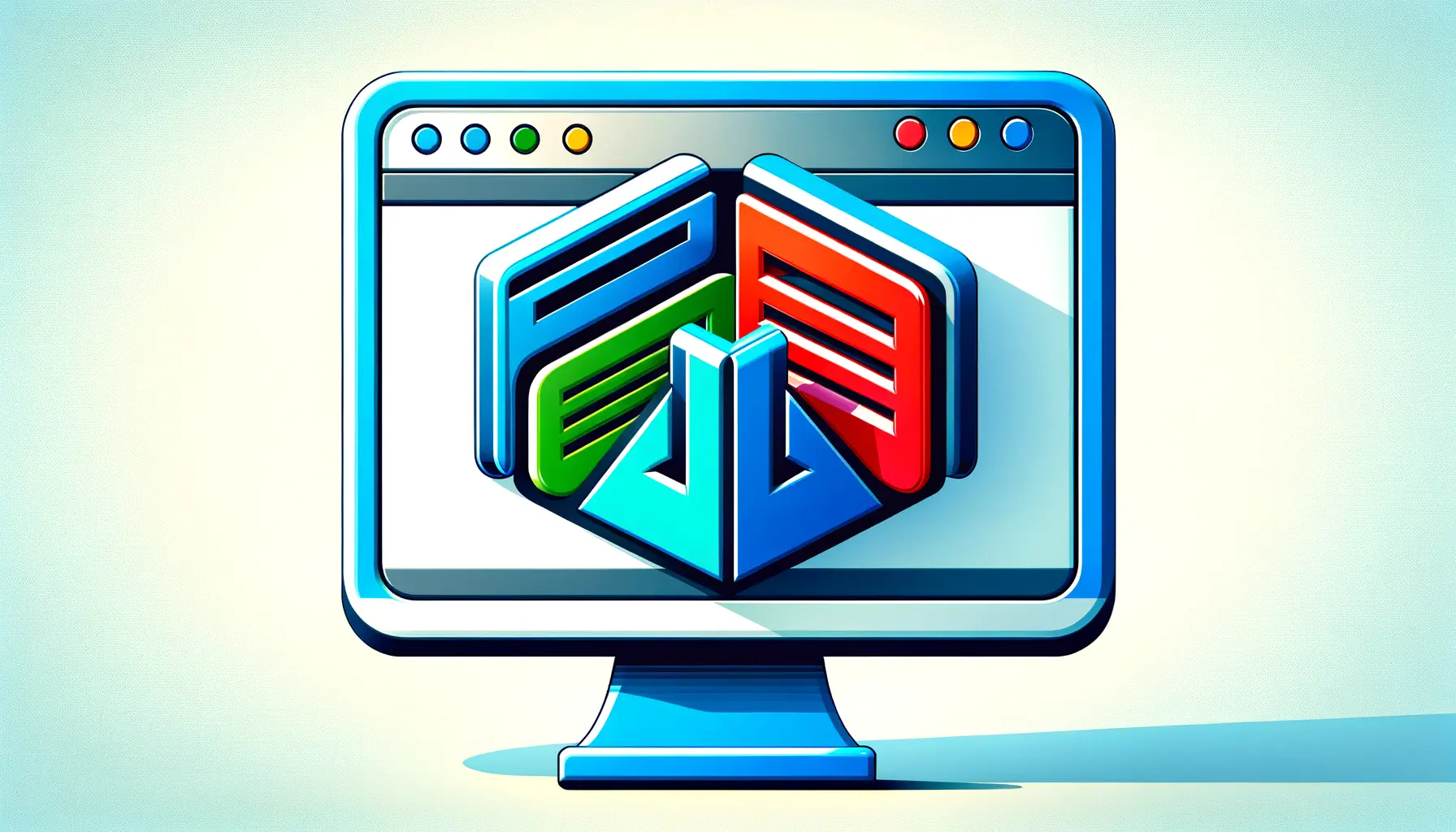Understanding the role of Doctype in HTML is crucial for both new and seasoned web developers.
This declaration, which should be the first line in any HTML document, is more than a formality; it’s a foundational aspect that informs the browser about the type of HTML to expect.
Without it, browsers might interpret and render pages unpredictably, leading to inconsistencies across different platforms.
The Doctype declaration is the key to unlocking the full potential of HTML5, ensuring that web pages are displayed correctly and consistently.
The evolution of HTML has introduced various versions, each with its own set of features and capabilities.
The Doctype declaration helps browsers navigate these versions, providing a clear signal to render the page according to the standards of the specified HTML version.
This is not just about making pages look right; it’s about ensuring that they function correctly, leveraging the full suite of HTML’s capabilities to create rich, interactive web experiences.
- Understanding Doctype and Its Evolution
- The Significance of Standards Mode vs. Quirks Mode
- How to Correctly Implement Doctype in Your HTML Documents
- Impact of Doctype on SEO and Accessibility
- Doctype and Web Development Best Practices
- Doctype Declaration and Browser Compatibility
- Future-Proofing Your Web Projects with Doctype
- Conclusion: The Pivotal Role of Doctype in HTML
- FAQs on The Importance of Doctype in HTML
Understanding Doctype and Its Evolution
What is Doctype?
At its core, the Doctype declaration is a directive to the web browser about the version of HTML in which a page is written.
It’s not an HTML tag but a declaration that precedes the HTML document itself, ensuring that the browser makes sense of the content following it.
This declaration is crucial for the browser’s rendering process, dictating whether it should render the page in standards mode, almost standards mode, or quirks mode.
The mode chosen can significantly affect the page’s layout, functionality, and compatibility across different browsers.
The importance of specifying a Doctype cannot be overstated.
It directly influences how CSS rules are interpreted, how elements are sized and positioned, and how JavaScript interacts with the Document Object Model (DOM).
By declaring the Doctype, developers have a direct hand in ensuring their site or application behaves as intended, no matter the browser or device.
The Evolution of HTML Doctype
HTML’s journey from its inception to the modern HTML5 has seen several iterations, each marked by its own Doctype.
From the strict, transitional, and frameset Doctypes of HTML 4.01 to the simplified “” of HTML5, the evolution reflects a streamlining of web standards and practices.
This progression towards simplicity means that today’s developers have a more straightforward path to ensuring their pages are standards-compliant, focusing more on content and user experience rather than wrestling with browser inconsistencies.
The transition to HTML5 and its Doctype was a significant milestone in web development.
It symbolized the industry’s move towards a more inclusive, accessible, and open web.
HTML5’s Doctype is not just a declaration of the document type; it’s a commitment to web standards, ensuring that web pages can be as future-proof as possible, embracing new technologies and methodologies as they emerge.
The Doctype declaration is the first step in ensuring a web page is rendered correctly across all browsers, setting the stage for a consistent and accessible web experience.
The Significance of Standards Mode vs. Quirks Mode
The concept of standards mode and quirks mode is pivotal in understanding the web’s evolution and the role of Doctype in HTML.
When a Doctype is correctly declared, it instructs the browser to render the page in standards mode, adhering closely to web standards as defined by the World Wide Web Consortium (W3C).
This mode ensures that modern web technologies and CSS layouts work as intended, providing a uniform experience across different browsers and devices.
Conversely, the absence of a Doctype or the use of an outdated one triggers quirks mode.
In this mode, the browser emulates the behavior of older browsers’ rendering engines, which can lead to unpredictable and often undesirable results.
Quirks mode was introduced to maintain compatibility with legacy websites designed before the adoption of web standards, but its use in modern web development is discouraged.
Key Differences Between Standards Mode and Quirks Mode
- Box Model Handling: In standards mode, the browser uses the W3C box model, which includes padding and border in the element’s total width and height. Quirks mode, however, reverts to the traditional box model, where padding and border are not included, affecting the layout of elements on the page.
- CSS Rendering: Standards mode ensures that CSS is interpreted according to the latest web standards, leading to more consistent rendering across browsers. Quirks mode may interpret CSS rules differently, leading to layout issues and visual inconsistencies.
- JavaScript Behavior: The Document Object Model (DOM) APIs and JavaScript behavior can vary between modes, potentially breaking functionality or causing errors in scripts designed for standards mode.
Choosing the Right Doctype for Your Project
Selecting the appropriate Doctype is crucial for leveraging the benefits of standards mode.
For modern web projects, the HTML5 Doctype declaration “” is recommended.
This simple, streamlined declaration is sufficient to trigger standards mode in all modern browsers, ensuring that your web pages benefit from the latest HTML, CSS, and JavaScript features without the quirks and inconsistencies of the past.
For projects that require compatibility with older versions of HTML or XHTML, specific Doctype declarations corresponding to those standards are available.
However, for most web development needs, the HTML5 Doctype provides the best combination of simplicity, compatibility, and future-proofing.
Always verify your Doctype declaration to ensure it matches the HTML version you’re using, as this is the first step toward a consistent and standards-compliant web experience.
How to Correctly Implement Doctype in Your HTML Documents
Implementing the Doctype declaration in HTML documents is straightforward, yet it requires precision to avoid common pitfalls that could lead to rendering issues.
The declaration should be the very first line in your HTML document, appearing before the tag.
This position ensures that the browser immediately recognizes the document type and switches to the appropriate rendering mode.
The simplicity of the HTML5 Doctype declaration makes it an ideal choice for all new web projects, promoting consistency and compatibility across different browsers and devices.
Steps for Implementing Doctype
To correctly implement the Doctype in your HTML documents, follow these steps:
- Begin your HTML document with the Doctype declaration. For HTML5, this is simply “”.
- Ensure there are no characters or spaces before the Doctype declaration. Even a single whitespace can cause browsers to enter quirks mode.
- Follow the Doctype declaration with the tag, which starts the HTML document.
- Validate your HTML document using a markup validation service to ensure that the Doctype is correctly recognized and that your document adheres to web standards.
Common Mistakes to Avoid
- Placing content before the Doctype: Any content, including comments or whitespace, before the Doctype declaration can trigger quirks mode in some browsers.
- Using an incorrect Doctype: Specifying a Doctype that doesn’t match the HTML version of your document can lead to rendering inconsistencies. For most modern web development, the HTML5 Doctype is the correct choice.
- Omitting the Doctype: Failing to include a Doctype declaration is a common mistake that forces browsers into quirks mode, potentially breaking the layout and functionality of your web pages.
Adopting the HTML5 Doctype simplifies the development process, ensuring that your web pages are rendered in standards mode across all modern browsers. This approach not only enhances cross-browser compatibility but also future-proofs your web projects against evolving web standards.
Impact of Doctype on SEO and Accessibility
The declaration of Doctype in HTML documents extends beyond just influencing the rendering mode of browsers; it plays a significant role in search engine optimization (SEO) and web accessibility.
A correctly declared Doctype ensures that web pages are indexed accurately by search engines, which prefer sites that adhere to web standards.
This adherence signals to search engines that the content is likely to be of high quality and relevant, potentially improving the site’s search rankings.
Moreover, the use of a proper Doctype supports web accessibility standards.
It ensures that web pages can be correctly interpreted by assistive technologies, such as screen readers, used by people with disabilities.
This not only broadens the audience for your content but also aligns with legal requirements for web accessibility in many jurisdictions.
Enhancing SEO with Correct Doctype Usage
- Improved Crawling and Indexing: Search engines can more effectively crawl and index content that is marked up according to web standards, leading to better visibility in search results.
- Reduced Page Load Times: Pages rendered in standards mode are often more efficient and load faster, a factor that search engines consider when ranking sites.
- Enhanced User Experience: A well-structured document that uses the correct Doctype contributes to a positive user experience, another critical aspect of SEO.
Supporting Accessibility with Doctype
- Standards Compliance: Using the HTML5 Doctype helps ensure that your web pages comply with current web accessibility standards, making your content more accessible to users with disabilities.
- Assistive Technology Compatibility: Properly declared Doctype aids in the correct interpretation of web pages by assistive technologies, improving the user experience for individuals relying on these tools.
- Legal Compliance: Adhering to web standards by correctly implementing Doctype can also help meet legal requirements for accessibility in various regions.
A correct Doctype declaration is a foundational step towards optimizing your website for search engines and making your content accessible to a broader audience, including those with disabilities.
Doctype and Web Development Best Practices
Incorporating the Doctype declaration as part of web development best practices is essential for creating robust, standards-compliant websites.
It sets the stage for modern web development, where adherence to web standards is not just preferred but expected.
Developers leveraging the HTML5 Doctype benefit from a streamlined approach to web design, enabling more consistent behavior across different browsers and devices.
Embracing best practices in web development, including the correct use of Doctype, facilitates the creation of websites that are not only visually appealing but also functionally rich and accessible.
This approach minimizes cross-browser compatibility issues, enhances the user experience, and simplifies maintenance and scalability of web projects.
Integrating Doctype with Modern Web Technologies
- Responsive Design: The HTML5 Doctype is fundamental for responsive web design, ensuring that CSS3 media queries are correctly interpreted by the browser.
- HTML5 APIs: Utilizing the HTML5 Doctype allows developers to fully leverage HTML5 APIs for advanced functionality, such as geolocation, local storage, and canvas for graphics.
- Accessibility Features: HTML5 introduces semantic elements that improve the structure and accessibility of web content, which are best supported with the HTML5 Doctype declaration.
Maintaining Code Quality and Standards Compliance
- Validation Tools: Regularly using HTML validation tools helps ensure that your code adheres to web standards, with the Doctype declaration being a key factor in this validation process.
- Continuous Learning: The web is constantly evolving, and staying informed about the latest web standards and practices, including the implications of the Doctype declaration, is crucial for modern web development.
- Collaboration and Documentation: Sharing knowledge about web standards, including the importance of Doctype, within development teams ensures that best practices are consistently applied across projects.
Adopting the HTML5 Doctype as part of web development best practices not only aligns with current web standards but also prepares your projects for future advancements in web technology.
Doctype Declaration and Browser Compatibility
The relationship between the Doctype declaration and browser compatibility is a critical aspect of web development.
The correct use of Doctype plays a significant role in how different browsers interpret and display a web page.
With the myriad of browsers available, from desktop versions to mobile browsers, ensuring consistent rendering across these platforms is a challenge that the Doctype declaration helps address.
By signaling the browser to use standards mode, developers can mitigate many of the inconsistencies that arise from the varied rendering engines used by different browsers.
This compatibility is especially important in a landscape where users access content from a diverse array of devices and browsers.
A missing or incorrect Doctype declaration can lead to a web page being displayed incorrectly in one browser but not in another, creating a fragmented user experience.
The adoption of the HTML5 Doctype simplifies this, as it is universally recognized by all modern browsers, ensuring that web pages are rendered in standards mode.
Testing Across Browsers
- Cross-Browser Testing Tools: Utilize tools designed for testing web pages across multiple browsers to identify and fix rendering issues that may be influenced by the Doctype declaration.
- Developer Tools: Leverage the built-in developer tools in browsers to examine how pages render in standards mode versus quirks mode, aiding in debugging and optimization.
- User Feedback: Collect and analyze user feedback regarding the compatibility and performance of web pages across different browsers and devices to make informed adjustments.
Ensuring Mobile Browser Compatibility
- Responsive Design: The HTML5 Doctype supports responsive design practices, ensuring that web pages adapt to the screen sizes of mobile devices for optimal viewing.
- Touch Events: HTML5 introduces touch events that are essential for interactive web applications on mobile devices, supported by the correct Doctype declaration.
- Performance Optimization: Mobile browsers benefit from web pages that load quickly and efficiently, an aspect that is positively influenced by adhering to web standards through the Doctype declaration.
Assuming that the Doctype declaration is only relevant for desktop browsers is a misconception. Its impact on mobile browser compatibility and performance is equally significant.
Future-Proofing Your Web Projects with Doctype
The digital landscape is ever-evolving, with new web standards, browsers, and technologies emerging regularly.
In this context, future-proofing web projects becomes a paramount concern for developers and businesses alike.
The Doctype declaration, particularly the HTML5 Doctype, plays a crucial role in this process.
By adhering to the latest web standards, it ensures that web projects are more adaptable to future changes in web technology and user expectations.
Future-proofing is not just about embracing the new; it’s about ensuring compatibility with the past and readiness for the future.
A correctly implemented Doctype declaration lays the foundation for web pages that are robust, accessible, and performant, regardless of how web standards evolve.
This foresight in web development not only enhances the longevity of web projects but also optimizes their performance and accessibility across the spectrum of web browsers and devices.
Embracing HTML5 and Beyond
- Standardization: The HTML5 Doctype represents the standard for modern web development, ensuring that web pages are built on a solid, standardized foundation.
- Advanced Features: HTML5 introduces a range of features designed for the modern web, including semantic elements, multimedia support, and APIs for enhanced interactivity and functionality.
- Accessibility and SEO: HTML5’s focus on semantic markup improves both accessibility and SEO, making web content more discoverable and usable.
Leveraging Doctype for Scalability and Maintenance
- Code Scalability: A clear understanding and implementation of the Doctype declaration facilitate the development of scalable web projects that can grow and evolve over time.
- Ease of Maintenance: Web projects that adhere to web standards are easier to maintain and update, reducing the time and resources required for ongoing development.
- Community and Support: By aligning with web standards, developers can leverage the vast resources, tools, and community support available for modern web development practices.
Incorporating the HTML5 Doctype is a strategic decision that positions web projects for long-term success, ensuring they remain relevant, accessible, and performant in the face of technological advancements and changing user needs.
Conclusion: The Pivotal Role of Doctype in HTML
The journey through the intricacies of Doctype in HTML underscores its undeniable importance in web development.
From ensuring that web pages are rendered correctly across various browsers to enhancing a site’s SEO and accessibility, the Doctype declaration serves as the cornerstone of modern web standards.
The evolution from complex strings to the streamlined “” reflects a broader shift towards more accessible, efficient, and future-proof web development practices.
Key Takeaways
Our exploration of Doctype in HTML has illuminated several key points:
- The Doctype declaration is essential for triggering standards mode in browsers, ensuring web pages are displayed as intended.
- HTML5’s Doctype simplifies the declaration process, making it easier for developers to create standards-compliant websites.
- Correct Doctype implementation is crucial for SEO and accessibility, impacting how sites are ranked and accessed by diverse audiences.
- Adhering to web development best practices, including proper Doctype usage, is vital for the scalability, maintenance, and longevity of web projects.
Looking Forward
As the web continues to evolve, the significance of Doctype in HTML remains constant.
It is a testament to the web’s ongoing commitment to standardization, accessibility, and forward compatibility.
Developers and designers are encouraged to embrace the HTML5 Doctype, leveraging its simplicity and power to build web experiences that are not only aligned with current standards but are also prepared for the advancements of tomorrow.
In conclusion, the Doctype declaration is more than a mere formality; it is a declaration of quality, accessibility, and future readiness.
By understanding and implementing this crucial piece of markup, developers ensure that their web projects stand on a solid foundation, ready to meet the challenges and opportunities of the digital future.
Quality web design is key for a great website! Check out our service page to partner with an expert web design agency.
FAQs on The Importance of Doctype in HTML
Explore common questions related to the significance of Doctype in HTML, providing insights into its role in modern web development.
Doctype declares the HTML version used, guiding browsers on rendering the page correctly.
It ensures web pages are rendered in standards mode, promoting consistency across browsers.
Correct Doctype usage improves webpage indexing by search engines, enhancing SEO.
Yes, it can trigger quirks mode, leading to inconsistent page rendering.
No, it varies, but HTML5 simplifies it to “”.
It supports web standards that aid in making content accessible to all users.
Yes, it ensures web pages adapt correctly to mobile browsers.
It may lead to web pages not behaving as expected in different browsers.










